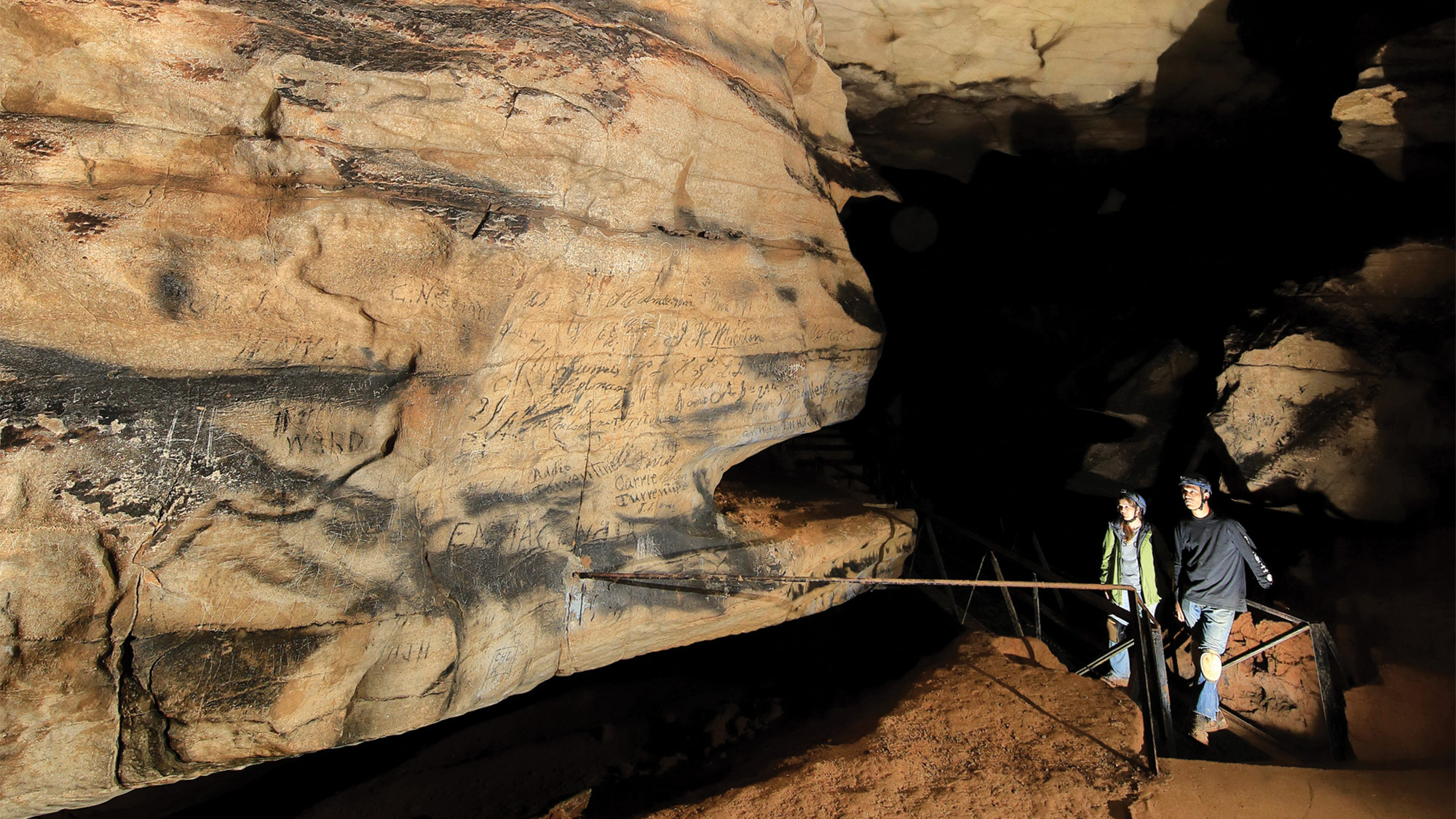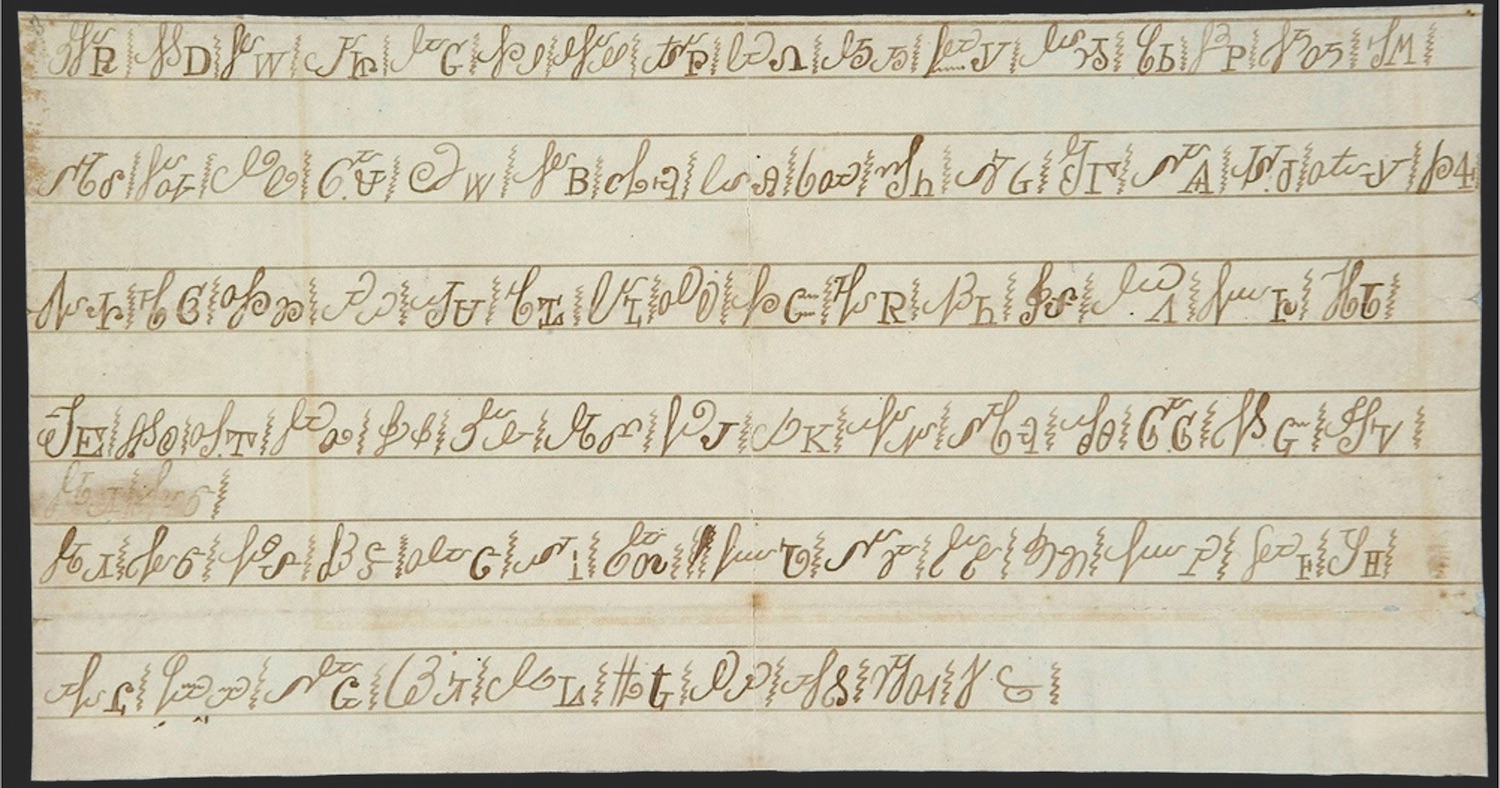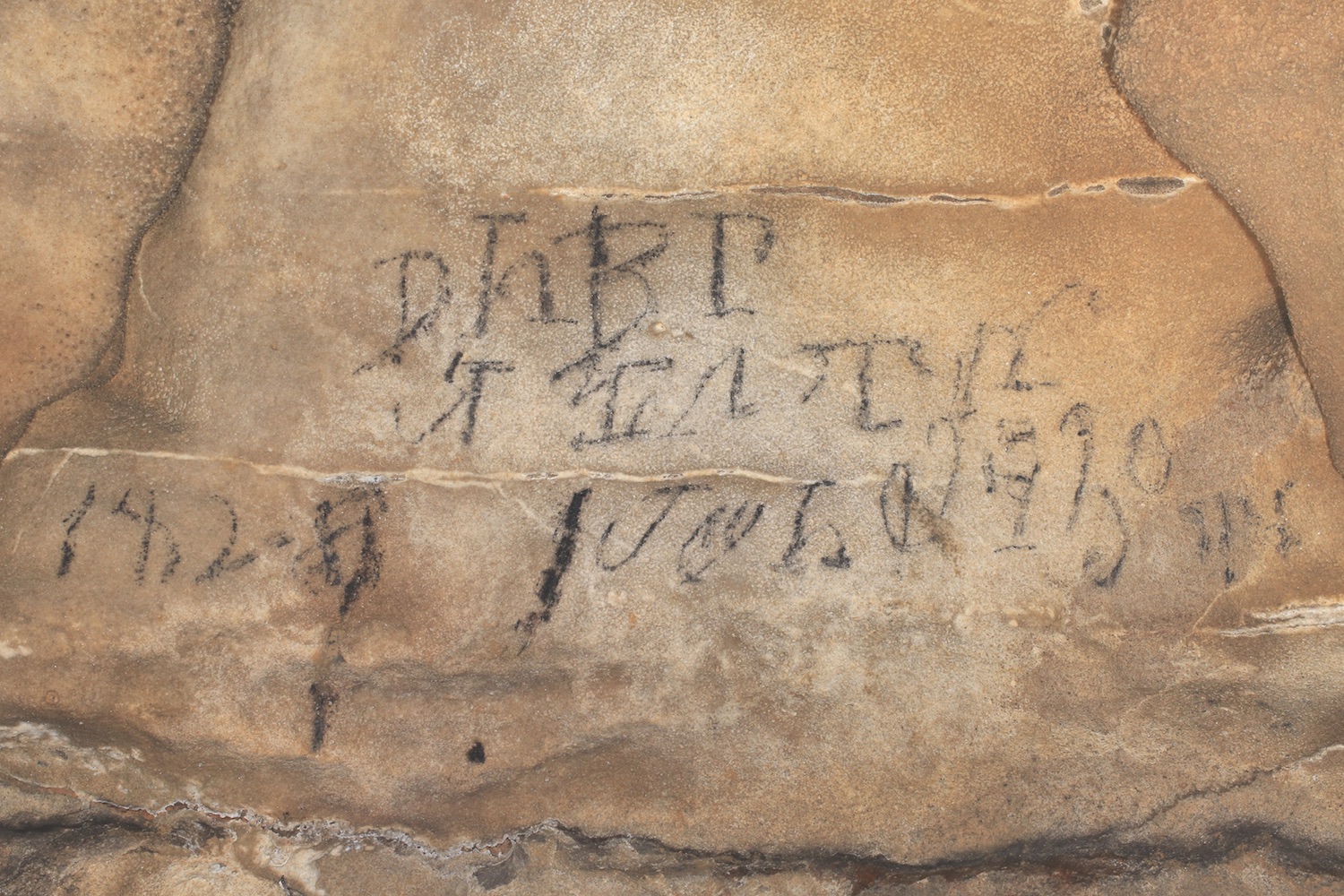Cherokee Wrote Backward Messages in Cave to Speak to the Spirit World

Nearly 200 years ago, Cherokee gathered inside a cave in Alabama and, using their newly minted alphabet, wrote ceremonial messages onto the walls and ceiling, a new study finds. The writings included accounts of Cherokee ancestors and stickball, the predecessor of lacrosse.
Some of the religious messages were written backward, possibly so that spirits in this cave — which the Cherokee might have viewed as a portal to the spirit world — could read them, the researchers said.
Modern researchers have known about these writings since explorers found the markings in Manitou Cave in 2006, but now a group of archaeologists, including those from the three federally recognized Cherokee tribes, have worked together to translate the messages. [10 Things We Learned About the First Americans in 2018]
It's rare to discover historical cave writings in a tribe's own alphabet, said the study's lead archaeologist, Jan Simek, distinguished professor of anthropology and president emeritus at the University of Tennessee, Knoxville.
"Here, we had Native American use of caves and Native American decoration of the walls of caves, but [in writing] that we could read," Simek told Live Science. "We could hear in their own voice what they were doing."
The messages are written in Cherokee syllabary, (a syllabary is a set of written characters that represents syllables in a spoken language), a writing system for the Cherokee language that a Cherokee man named Sequoyah invented in the early 1800s. At the time, Sequoyah lived in Willstown (now Fort Payne, Alabama), a large refugee community of Cherokees who had fled their farming and hunting homeland that straddled the Appalachian Mountains in parts of Georgia, South Carolina, North Carolina and Tennessee after Euro-Americans began taking over that region, Simek said.

Sequoyah's syllabary was so successful that the Cherokee adopted it as their writing system in 1825, and it became widely used, the researchers said. Even so, it was a surprise to find the writing in Manitou Cave, with some of the markings discovered about 1 mile (1.5 kilometers) from the cave's mouth.
Sign up for the Live Science daily newsletter now
Get the world’s most fascinating discoveries delivered straight to your inbox.
Around the time Sequoyah developed this alphabet, the Cherokee were facing untold pressures from the U.S. government, which forcibly relocated them from their native lands in the Southeast during the Trail of Tears in the 1830s, said study lead researcher Beau Carroll, an archaeologist for the Eastern Band of Cherokee Indians' Tribal Historic Preservation Office.
During these tumultuous times, Manitou Cave likely took on a new, spiritual significance. "It was like [the Cherokee] were looking for places to go where they could continue to practice their traditional ways without interference," Carroll told Live Science.
Cherokee messages
In one inscription, translated by the Cherokee archaeologists with help from others in the tribe, the Cherokee wrote about a ritual stickball event that happened in 1828. A translation reads, "the leaders of the stickball team on the 30th day in their month April 1828," while another nearby message says, "we who are those that have blood come out of their nose and mouth." The "their" in the first sentence likely refers to Euro-Americans, who used month names, the researchers said. The other line refers to injuries sustained during the Cherokee version of lacrosse, a complex and ceremonial game that could last days.
Before each game, stickball players would undergo a ritual with sacred water. It appears that the players used the subterranean waters in the cave for this cleansing ritual, the archaeologists said.

Another series of messages, scrawled onto the ceiling near the cave's entrance, are written backward and are religious in nature. Because the Cherokee still consider these writings to the spiritual world to be sacred, the archaeologists decided not to provide the translations in the study, out of respect for the Cherokee people, Simek said. However, the researchers did say that it's possible these lines were written backward so that they would be legible to supernatural beings and the Cherokees' departed ancestors.
The cave also has the signatures of Cherokee ceremonial leaders, including Richard Guess, one of Sequoyah's children, who wrote "I am a respectable man of authority," in one of the messages.
The study was published online today (April 10) in the journal Antiquity.
- Photos: 'Winged Monster' Rock Art in Black Dragon Canyon
- In Photos: Discoveries at the Site of the Pequot War in Connecticut
- Centuries of Tradition: Stunning Photos of Native American Hopi Pottery
Originally published on Live Science.

Laura is the archaeology and Life's Little Mysteries editor at Live Science. She also reports on general science, including paleontology. Her work has appeared in The New York Times, Scholastic, Popular Science and Spectrum, a site on autism research. She has won multiple awards from the Society of Professional Journalists and the Washington Newspaper Publishers Association for her reporting at a weekly newspaper near Seattle. Laura holds a bachelor's degree in English literature and psychology from Washington University in St. Louis and a master's degree in science writing from NYU.










